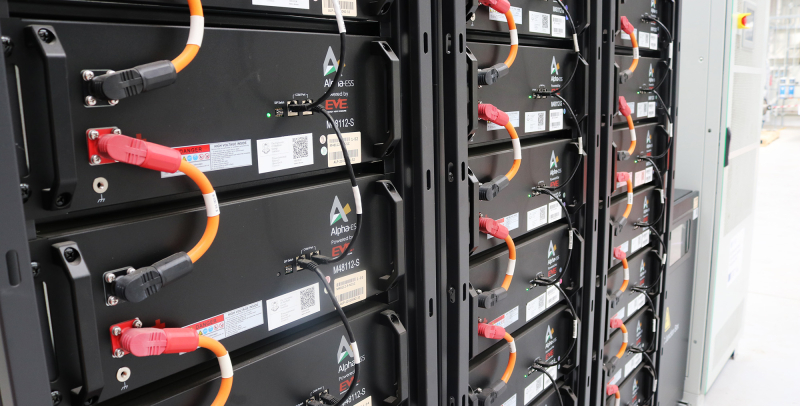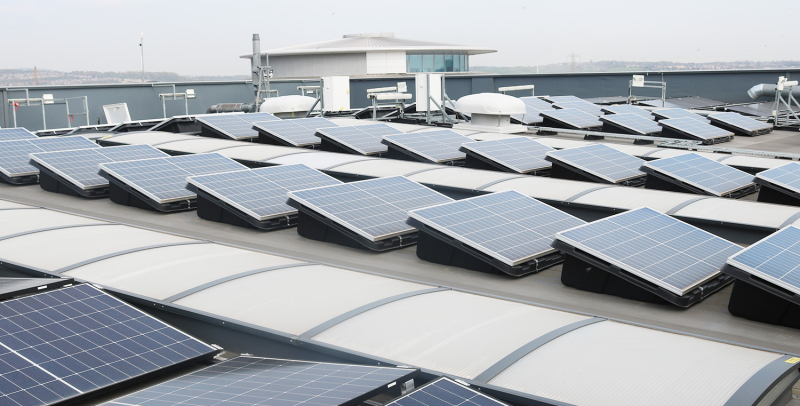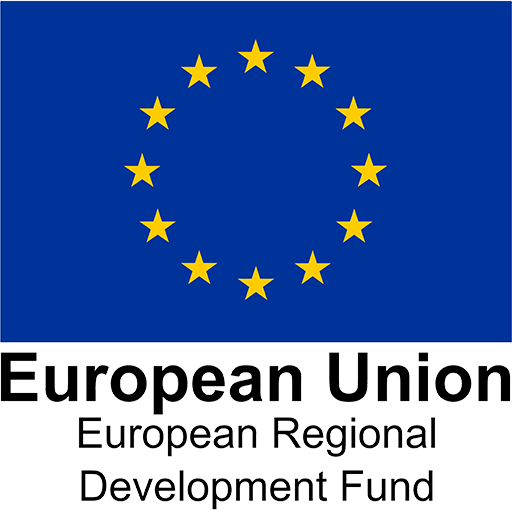Energy storage batteries

- Our facility hosts 120kWh, 50Kw Lithium battery with DC and AC interfaces that can be connected to the AC grid for grid-connected research, or to a dedicated DC bus along with other assets to provide a flexible test bed to facilitate both grid-connected and ‘behind the meter’ energy optimisation.
Solar PV Panels

At TERC we have several solar PV panels situated on the roof that we use to generate green energy for the site. That energy can then be linked to the batteries and the H2 electrolyser to produce green hydrogen.
Smart energy system
- The different technologies at this facility can be combined into integrated systems in an effective and complementary manner, in order to make our energy use efficient and sustainable. We bring together energy generation across multiple low-carbon sources and heat and power utilisation, and we look at grid balancing between the systems, including energy storage. We also monitor how these systems are affected by dynamic operations both individually and as part of an integrated multi-element system.
- In addition to the CCUS applications, we bring together different generation systems in micro-grid arrangements to optimise both local efficiency and manage exports to the grid and simulated grid balancing. We also focus on thermal energy management, including monitoring of heat flows from and generation to thermal storage, onsite process/space heating utilisation and (in the future) wider site heat networks.
sCO2 heat exchanger test bed
- A high-pressure, high temperature Heat Exchanger (HEX) test bed with fully instrumented fail-safe operation.
- The test bed includes two supercritical CO2 loops with operating pressures of up to 350 and 100 bars respectively, and has the ability to test two heat exchangers at the same time.
- This equipment supports research and development in high-efficiency power conversion cycles and their global applications in power and industrial sectors.
- The test bed focuses on a wide range of applications including supercritical CO2 for oxy-fired gas cycles (Allam cycle) and nuclear applications.
- It also provides performance data for the supercritical CO2 cycle to model and evaluate designs, for example in fluid passages.
- This equipment is also suitable for studying heat transfer, pressure drop, thermal stresses, impact of phase changes, impurities, fouling, corrosion and for materials research in heat exchangers using a range of fluids.
Micro-CHP
- Enertwin – a novel low-carbon microturbine based CHP system with 3.2 kW and 15.6 kW electrical and thermal outputs respectively
- Has an overall efficiency of 94% and electrical efficiency of 16%
- Has flexibility to operate with a wide range of fuels (e.g. bio-methane, natural gas mixed with up 23% hydrogen, LNG and CNG)
- Has potential to be altered to research pure hydrogen operation
- Flexible turndown without a significant loss in efficiency: 1 to 3.2 kWe and 6 to 15.6 kWth
- CO2 and NOx Emissions reduced by 9.5 tonnes/year
- Has a rapid start-up: less than 2 minutes
- Ideal for old houses and buildings as it is primarily a plug-and-play technology (installation costs are low)
- Low maintenance costs; it has only one moving part
- Silent and vibration-free (55 dB(A) 1m)
- Demonstrates low-weight and it does not need therefore structural changes
- The generator is fully integrated in the microturbine rotor system, avoiding costs and losses of additional couplings and bearing
- Remote monitoring and control capability ensures more efficient servicing and reduced unnecessary
- Has been awarded CE certificate by KIWA




